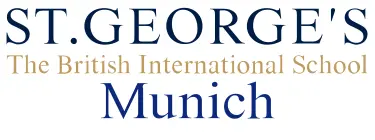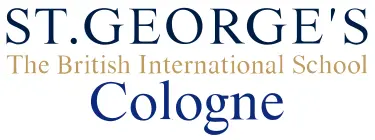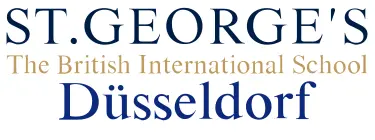First off, believe it or not, despite its centuries’ old history and fame as a producer of white wines, virtually 50% of all German vineyard acreage is planted with red, not white, grapes! No kidding – the changeover began more than ten years ago.
Three reasons for the big-time move to red were:
- Changed eating habits: Germans became addicted to eating much more beef and other red meats – and grilling more pork, veal, chicken as a direct result of personal and business travel overseas.
- Global travel: Worldwide journeys to big meat eating nations – the US, Canada, Australia, Argentina — where grilling and barbecue are daily fare, lands where steak houses reign, — red wine is the natural accompaniment. This exposed Teutonic travelers to new, bold flavors and red-wine friendly cuisines.
- And, finally, Science: Mother Nature got involved — climate change: it enables Germany to enjoy much warmer, longer growing seasons. These are necessary for producing fully ripened, higher fruit-sugar level wines with more intensive coloration, flavor and alcohol. This development inspired German vintners to re-plant prime white wine acreage with red varietals.
The Lineup
For the record, Germany’s most popular reds are Pinot Noir or Spaetburgunder, Pinot Madeleine or Fruehburgunder, Pinot Meunier or Schwarzriesling/Black Riesling: all are Burgundian grape varietals. Unlike French wines, these display fine structure and often distinct minerality. They are not big, fat, jammy, high alcohol Pinots like their American, Argentine or Australian counterparts.
St Laurent, Zweigelt, Blaufraenkisch/Lemberger, Trollinger, and Domina are local central European varietals with medium heft and mouth feel. Dunkel and Dornfelder are more intense and heavier, the former more graceful than the latter.
All of these varietals are used to produce red or rosé wines — either 100% pure or in cuvées or combinations.
Given the ever-hotter springs and lengthening summers, even Cabernet Sauvignon, Cabernet Franc and Merlot are being grown in German. However not as you probably know them but — thanks to the terroir and overall climate — they are rather different from the same wines coming to Germany in increasing quantities from Italy, France, the United States, New Zealand, Australia or Argentina. They show lower alcohol levels, too. Furthermore, they require bottle aging and are not fruit-forward for easy drinking and are frequently uncut with Merlot or conversely Cabernet.
NOTE: What’s on the label in Germany is 100% pure unlike other countries’ labeling, In the US wines must be only 75% of what’s on the label, in France 85%.
So, rejoice you carnivores whom love reds.
Beef is getting bigger on German menus at home and dining out. Nevertheless, pork remains Germany’s number one meat, and pork, like poultry, veal and other lighter meats also does very well with white wines – particularly well-ripened Riesling, which still is Germany’s number one white varietal.
The world turned upside down! The Mosel-Saar-Ruwer growing area which produces some of Germany’s and the world’s most opulent, delicious Riesling white wine, now accounts for some intriguing reds as certain key producers have added Pinot Noir known here as Spaetburgunder to their output. Imagine converting fabulous Riesling acreage to red wine production! Heresy! However, it still will take at least several seasons until those vines take root, mature and show their stuff.
Will the results be similar to the fabulous Riesling with ultra ripe fruit and minerality? None of Germany’s other red wine growing areas share those incredibly steep slopes and lavish sunshine found along the Mosel. Pinot Noir is notoriously fickle, very thin-skinned, delicate and very much the opposite of Riesling which if nothing else can endure Germany’s long, cold tortuous winters and abrupt climate and weather changes.
All we can do is wait and see and seek out these extremely young growths and guess where they are going!
In addition to Riesling, there are other great German whites, too: Silvaner, low-yield Müller-Thurgau (aka Rivaner), Rieslaner (Riesling x Silvaner,) Scheurebe and Gewürztraminer. The latter two are naturally sweet, spicy wines increasingly offered in a subdued drier, lighter, more alcoholic style for easy drinking and with meals, than in their much riper, sweeter form as apéritif and dessert wines.
Thanks to climate change German-grown Chardonnay and Sauvignon blanc as well as Auxerrois have crossed the border from France too. Gutedel aka Chasselas and Pinot Gris/Grauburgunder and Pinot Blanc/Weißburgunder – have long been Burgundy’s gift to German viticulture and are fine alternatives to Riesling — especially if acidity is an issue.
However, be advised that German Grauburgunder/Pinot Gris is a far cry from Italy’s floral, aromatic Pinot Grigios or France’s subtle, Pinot Gris. Minerality and sharply contoured structure define German Grauburgunder. It is a straightforward, strong statement. While less emphatic, Weissburgunder again is gutsier than either the Italian Pinot bianco or French Pinot Blanc. They go great with any tomato-based dish where acidity should be avoided or with freshwater fish and lighter midday and dinner fare.
For decades one of Germany’s best buys was Winzer Rieslingsekt. Sparkling Riesling made by the vinter either in the bulk Charmat steel tank fermentation manner at rock bottom price or the costlier méthode tradionale champagnoise – bottle-fermented, disgorged, and hand-racked over a number of years. If nothing else, the quality has improved over the years, Sekt is a fraction the cost of Champagne and can be just as dry, fresh, bracing and toasty. Even better, many vintners are making sparkling rosé with Pinot Noir, Pinot Meunier (same as found in pink Champagne!) and a host of other local red grapes including Rotling.
Given Germany’s highly varied geological features within all of its 13 official growing areas (Anbaugebieten), the variety of flavors and sensations particularly in the delicate Riesling area is far too broad to discuss here. However, the wealth of information available free online from individual vintners, growers’ associations, cooperatives, the VDP (Germany’s association of the nation’s most prestigious wineries) and the DWI, German Wine Institute, beggars description.
Given that several growing areas such as Sachsen, Saale-Unstrut, Bergstraße, Württemberg, Baden, Ahr and Franken hardly export much wine beyond their own borders, each of these areas offer exciting, interesting wines which are best procurred locally.
Newcomers to Germany will discover sensations unknown abroad. Weekend visits to vintners from the Bodensee to “Martin Luther Land” and from just south of Cologne along the Autobahn 5 south of Darmstadt to the Swiss border at Lörrach will encounter wines that reflect their terroir perfectly: just follow the Rhine upstream. So, too, the meandering Main River and its parallel tributary, the Tauber, along Autobahn 3, from just east of Frankfurt Airport heading east towards Würzburg and on to Schweinfurt.
Dropping south from Autobahn 6 at Heilbronn and following Route 27 into Stuttgart from Weinsberg to Mercedesland offers lovely wines at bargain prices. And leading on down into the Black Forest and bevy of Germany’s finest restaurants in Baden-Wuerttemberg, the home of more Michelin Star restaurants than the rest of the country put together!
So, welcome to Germany where we produce and drink some of the world’s greatest wines – both red and white—and probably the world’s greatest and most inimitable Riesling, still number one!
Tom Lipton, aka Victor Tigron, retails wine, has exported and imported German, French, Italian and American wines on both sides of the Atlantic. He was trained in California, France, Italy and Germany where he also works with Austrian growths. A veteran of 18 ProWein gatherings – Germany’s foremost wine and spirits trade exhibition, held annually in Duesseldof — and countless other tastings. The late Robert Mondavi was his “Wine Godfather”.
Visit our Relocation/Moving/Shipping Services Storefronts
Visit our Working/Employment/Job Advice Storefronts
Visit our Marriage/Wedding Services Storefronts
Visit our Furnished Apartment Rental Storefronts
Visit our Home and Office Cleaning Services Storefronts
Visit our Residence Permits/Legal Services Storefronts
Visit our Business Tax/Legal Advice Storefronts
Visit our Services for Freelancers & Self-employed
- Kontist – Tax Service and Assistance for Freelancers and the Self-employed


























